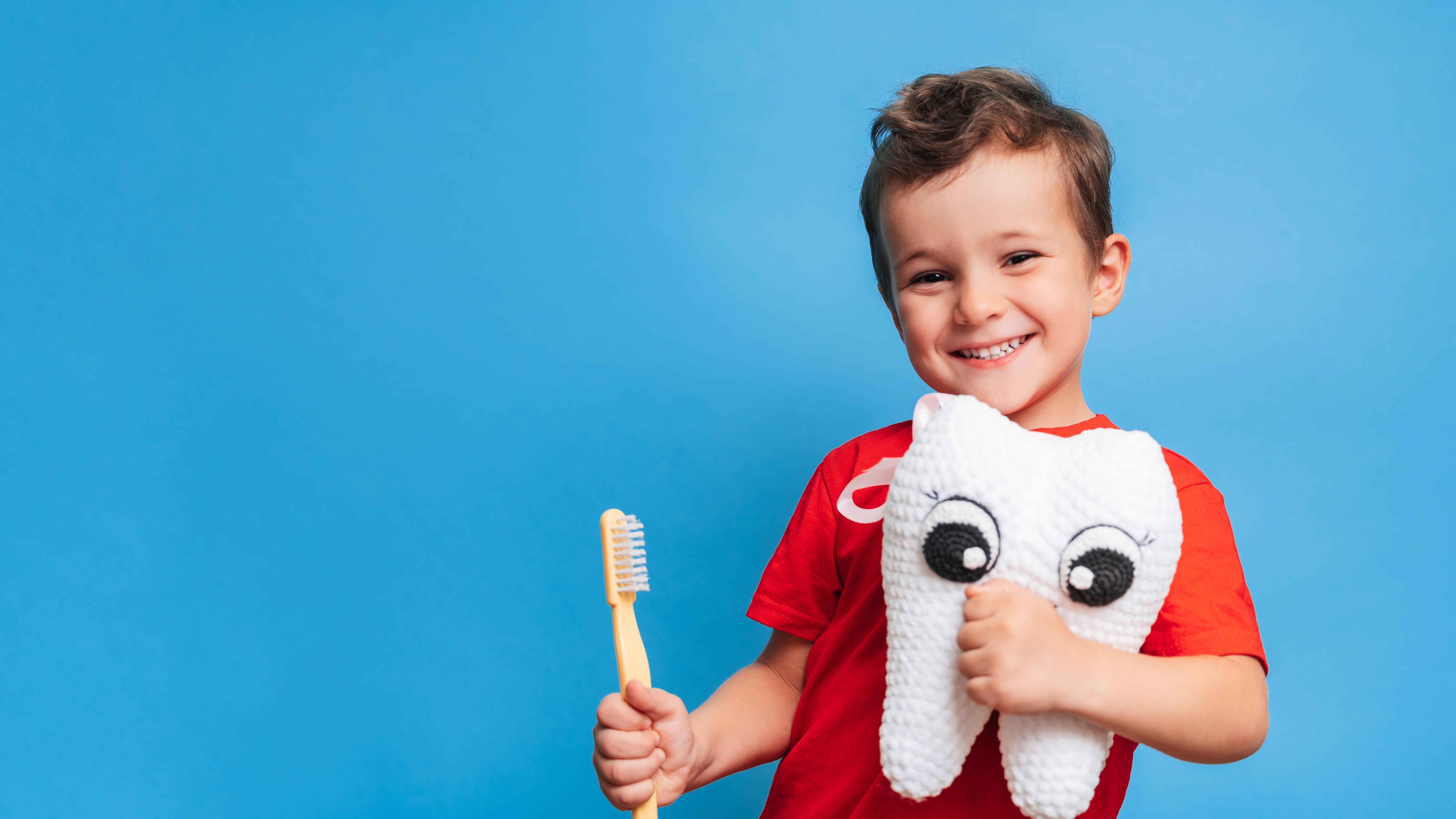Oral Hygiene

Brushing
Brush your child’s teeth daily with fluoridated toothpaste: less than a pea-sized amount before age 1, half of a pea-sized amount between 1 and 2 years and a pea-sized amount for children 3 and above.
When you brush your teeth, move the brush in small circular motions to reach food particles that may be under your gum line. Hold the toothbrush at an angle and brush slowly and carefully, covering all areas between teeth and the surface of each tooth. It will take you several minutes to thoroughly brush your teeth. Brush up on the lower teeth, down on the upper teeth and the outside, inside and chewing surface of all of your front and back teeth. Brush your tongue and the roof of your mouth before you rinse.
It is important to remember to “Lift your Child’s Lip” to better brush your child’s four top front teeth and look for early signs of cavities, such as white spots. Cavities can progress quickly and begin in this area with toddlers.
Brush your teeth twice daily to avoid the accumulation of food particles and plaque:
- It is important to start brushing early to ensure your child has healthy teeth.
- Children need assistance brushing until age 6 or 7.
- Brush your preschool child’s teeth twice a day, especially before bedtime.
- It is normal for children to fuss during tooth brushing. Talking, singing and distracting during tooth brushing helps.
As soon as the bristles start to wear down or fray, replace your toothbrush with a new one. Do not swallow any toothpaste; rinse your mouth thoroughly with water after you finish brushing. It is important to carefully floss and brush daily for optimal oral hygiene.
Flossing
For areas between the teeth that a toothbrush can’t reach, dental floss is used to remove food particles and plaque. Dental floss is a thin thread of waxed nylon that is used to reach below the gum line and clean between teeth. It is very important to floss between your teeth every day.
Pull a small length of floss from the dispenser. Wrap the ends of the floss tightly around your middle fingers. Guide the floss between all teeth to the gum line, pulling out any food particles or plaque. Unwrap clean floss from around your fingers as you go, so that you have used the floss from beginning to end when you finish. Floss behind all of your back teeth.
Floss at night to make sure your teeth are squeaky clean before you go to bed. When you first begin flossing, your gums may bleed a little. If the bleeding does not go away after the first few times, let a staff member know at your next appointment.
Fluoride
Fluoride helps make teeth strong and prevents tooth decay. If you are unsure if your water is fluoridated be sure to call your local water authority and ask if your water is fluoridated.
- It is extremely important for your child to have the proper amount of fluoride.
- Fluoride is a natural mineral that helps prevent tooth decay.
- Community water fluoridation, where available, is the best way to prevent tooth decay.
Our office offers an improved method of decay prevention to our patients. We are using a varnish to apply fluoride to children’s teeth. The fluoride varnish has a longer working time than the traditional fluoride gels or foam applications.
Team Approach to Oral Health
Good oral health is an important part of total health. When helping children, we often work with pediatricians, other physicians and dental specialists. All young people are served best through this team approach. We, the dental team, are an important part of your child’s health team.
Most importantly, you the parents are integral to this team.
Role Parents Play
Parents are responsible for ensuring their children practice good dental hygiene. Parents must introduce proper oral care early in a child’s life—as early as infancy. The American Academy of Pediatric Dentistry states that a good oral hygiene routine for children includes:
- Thoroughly cleaning your infant’s gums after each feeding with a water-soaked infant cloth. This stimulates the gum tissue and removes food.
- Gently brushing your baby’s erupted teeth with a small, soft-bristled toothbrush and using a smear-amount of non-fluoridated toothpaste.
- Once they are able to spit out their toothpaste they can begin to use a pea-sized amount of fluoridated toothpaste.
- Teaching your child at age 2 or 3 about proper brushing and later teaching them flossing techniques.
- Determining if the water supply that serves your home is fluoridated; if not, discussing supplement options with our office.
- Avoid sugary beverages in sippy cups that can cause cavities (juice, soda pop, kool-aid, etc).
- Limit juice to no more than 4 to 6 oz daily for children 1 to 6 years. Encourage children to eat whole fruits.
- Asking our staff about sealant applications to protect your child’s teeth-chewing surfaces and about bottle tooth decay, which occurs when teeth are frequently exposed to sugared liquids.
- Regular visits with our office to check for cavities in the primary teeth and for possible developmental problems.
After evaluating your child’s dental health, our staff will design a personalized program of home care for your child. This program will include brushing and flossing instructions, diet counseling, and if necessary, fluoride recommendations. By following these directions, you can help give your child a lifetime of healthy habits.
Sometimes it can be difficult to care for your child’s oral hygiene due to difficult behavior. It is very common for young children to resist parental assistance to brushing and flossing but this negative behavior can be modified using appropriate techniques.
Click here for an article on behavior management from Children’s Hospital of Wisconsin.



.svg)